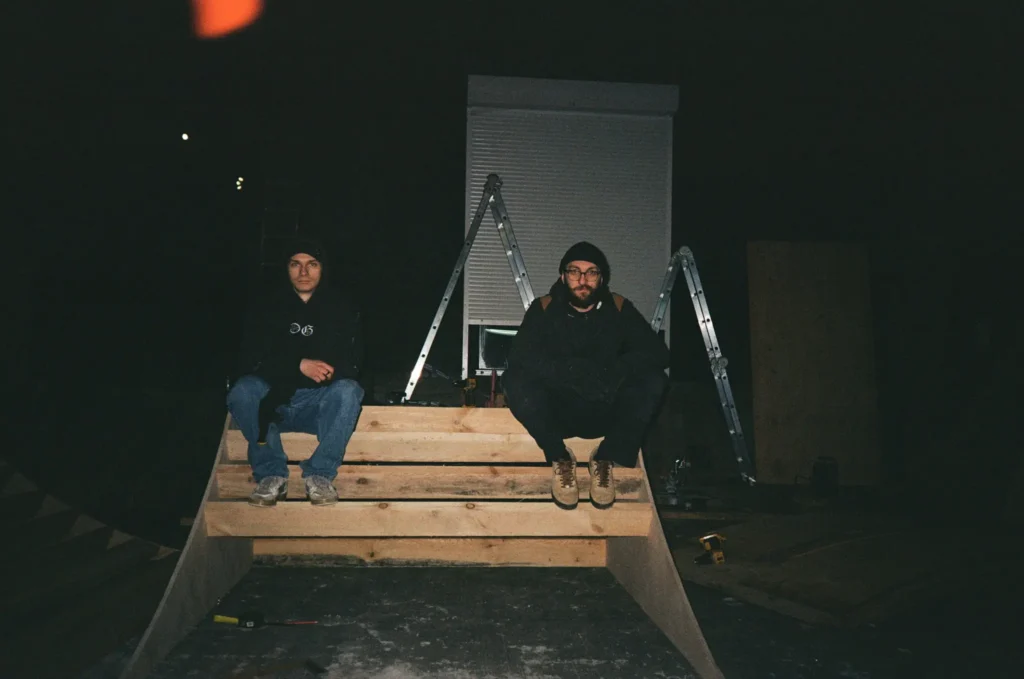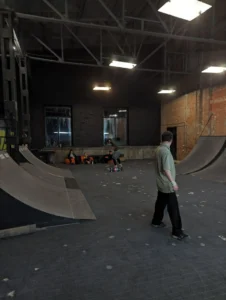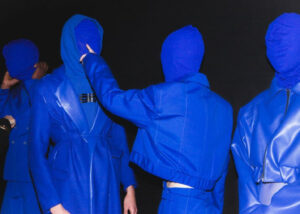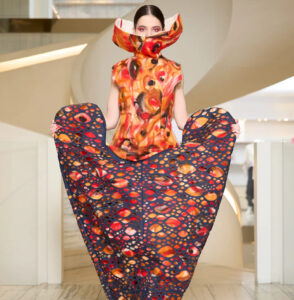In the pithy of eastern Ukraine, where the threat of air raid sirens punctuates daily life and the nearness of the frontlines turns every morning into an existential question, a group of young people have transformed an abandoned industrial shell into something miraculous. A sanctuary. A skatepark. A home for sound, rebellion, defiance, and motion. They call it Krytka.
Nestled in the small city of Okhtyrka, merely 50 kilometers from the Russian border, Krytka isn’t just a repurposed warehouse. It is a living statement, a monument to survival, a stronghold of subculture and street resistance. Built by a collective of skaters, artists, and musicians, Krytka stands in dramatic contrast to the violence that surrounds it — not with steel or bullets, but with spray paint, kickflips, and basslines.
Pavlo Ihnatenko, the soft-spoken but steely organizer behind the project, picks up his laptop during a Zoom call and steps outside mid-interview. The crackle of distant shelling and the wail of sirens replace his voice. “Stop, one moment – listen,” he says. It’s a disconcerting lull that reminds you this is not metaphor, not romanticism. This is war. And yet, inside this crumbling building, life reclaims space, trick by trick, riff by riff.
The Cultural DNA of Rebellion: From Southbank to Okhtyrka
Pavlo was never a skateboarder in the traditional sense. But like many growing up in Ukraine during the early 2000s, he became entranced by the exported visuals of Western skate culture: the hazy VHS aesthetics, the baggy jeans, the DIY ethic that shone through in skate videos beamed across oceans via MTV and YouTube.
“We were amazed by the culture of the Southbank in London,” Pavlo recalls. “We had no infrastructure for skating here, but it wasn’t about that. It was the freedom of it. The community. We just wanted to make a place for people to come.”
In literature, this act — the creation of sanctuary through imagination — echoes the Romantic poets’ valorization of the pastoral. But Krytka is not a retreat into nostalgia or natural beauty. It is post-industrial Eden reimagined, skate decks grinding on the bones of a collapsed economic past. In a space once meant to produce material for a state that no longer exists as it once did, youth now produce something else entirely: expression, belonging, resistance.
Like the legendary Southbank Centre in London, Krytka grew organically. No city ordinance approved its construction. No corporate sponsor funded its quarter pipes. It was carved out, scavenged and scraped together by hands that refused to stay idle.
Youth Culture on the Edge of Oblivion
“Life has changed pretty drastically – a lot of people moved away from town, a lot of people have died,” Pavlo says plainly, almost too plainly. His is the cadence of someone who has accepted the abnormal as daily reality.
Ukraine’s war, now deep into its second decade, has fractured more than just cities and landscapes — it has disrupted the rites of youth. In this environment, skateboarding becomes more than sport; it becomes a language of resilience. Music isn’t just entertainment — it’s communion.
Bohdan, one of the skaters who helps maintain Krytka, sees it in simpler terms: “It’s the only place where you can forget, even for a minute, that things outside are falling apart.”
There’s something profoundly literary in their project — the notion that when all structures fail, art and subculture remain as tools of identity formation. Think of Albert Camus’ The Plague, where artistic expression stands as the final bulwark (defensive-wall) against absurdity. Or Zadie Smith’s Swing Time, where dance becomes a negotiation of place and belonging. In Krytka, skating and beat-making offer similar lifelines.
Building with Scraps: DIY in the Backdrop of Ruin
Nothing in Krytka came easy. The building was not just abandoned; it was decayed, unsound, and haunted by histories both Soviet and post-industrial. The crew gutted the space, rebuilt floors, hauled lumber. Ramps were fashioned out of scavenged materials. A sound system was set up with salvaged equipment. Spray-painted murals slowly crept across the concrete.
Their labor echoes the long history of DIY culture — from the punk squats of Berlin to the warehouse shows in Oakland. But unlike those, Krytka operates under conditions of scarcity unimaginable in most Western contexts.
There’s no electricity during blackouts, so sometimes sessions happen under battery lights. There’s no insulation, so winter brings brutal cold. Yet the park never closes. It becomes a physical metaphor for defiance — if it stands, they stand.
In this, Krytka channels something akin to Walter Benjamin’s “angel of history,” who sees the past as a pile of debris growing skyward, pushed by the storm of progress. The skaters of Okhtyrka do not pretend to halt the storm. But within their shelter of sound and steel, they build against the wind.
The Sounds of Resistance
Skating is only one part of the equation. Krytka is also a music venue, rehearsal studio, and cultural gathering space. Musicians and DJs set up within the concrete walls, crafting sounds that echo long into the night. Here, electronic experimentation, hip-hop, punk, and metal collapse into a singular dialect — the language of a generation raised under sirens.
Stanislav, one of the collective’s translators and sound engineers, notes how important this element is. “It’s not just music — it’s medicine. You can scream, you can dance, you can forget.” Krytka hosts community events, graffiti workshops, and impromptu concerts that turn ruins into something reborn.
This musical landscape aligns with literary explorations of liminal spaces — like those in Teju Cole’s Open City, where sound and silence alternate as urban lifeblood. In Okhtyrka, music is not ambiance. It is architecture.
Krytka and the Art of Hope
To see Krytka is to witness the materiality of hope. Not the naïve, wide-eyed version, but the kind that emerges from labor and danger — a hope dug out with shovels and skated over with broken boards.
Pavlo is aware of how tenuous it all is. “We live each day as our last,” he says, “because we don’t know if we will wake up tomorrow morning.” And yet he wakes up. And so do they all. They build. They paint. They skate.
In this sense, Krytka joins the pantheon of places like Kabul’s Skateistan, Palestine’s park in Qalqilya, and even fabled DIY skate spots in Detroit and Athens — all of them micro-utopias forged in environments of instability.
But Krytka’s proximity to war makes it uniquely urgent. It is a space where every grind on metal feels like a prayer, every kickflip a small act of freedom. Literature has often treated war as a devourer of youth; here, youth reclaim the war-torn landscape as their own, not with weapons, but with wheels and chords.
Impression
In a world that seems bent on forgetting small cities like Okhtyrka, Krytka refuses to be erased. It is not large. It is not globally famous. But in its limited square meters lies something radical — a blueprint for resistance built not through ideology, but through motion, collaboration, and care.
Krytka reminds us that the frontlines are not always drawn with borders or trenches. Sometimes, they pass right through a city block, a crumbling stairwell, a half-finished ramp. And on those frontlines, communities like Pavlo’s stand firm, not because they expect to win the war, but because they cannot allow life to be dictated by it.
When the sounds of bombing fade and peace returns — if it returns — perhaps Krytka will remain, not as a refuge from war, but as a testament to how communities survive it. And maybe then, we will understand that the future, like a skate trick, is always a risk worth taking — especially when the alternative is silence.
No comments yet.








